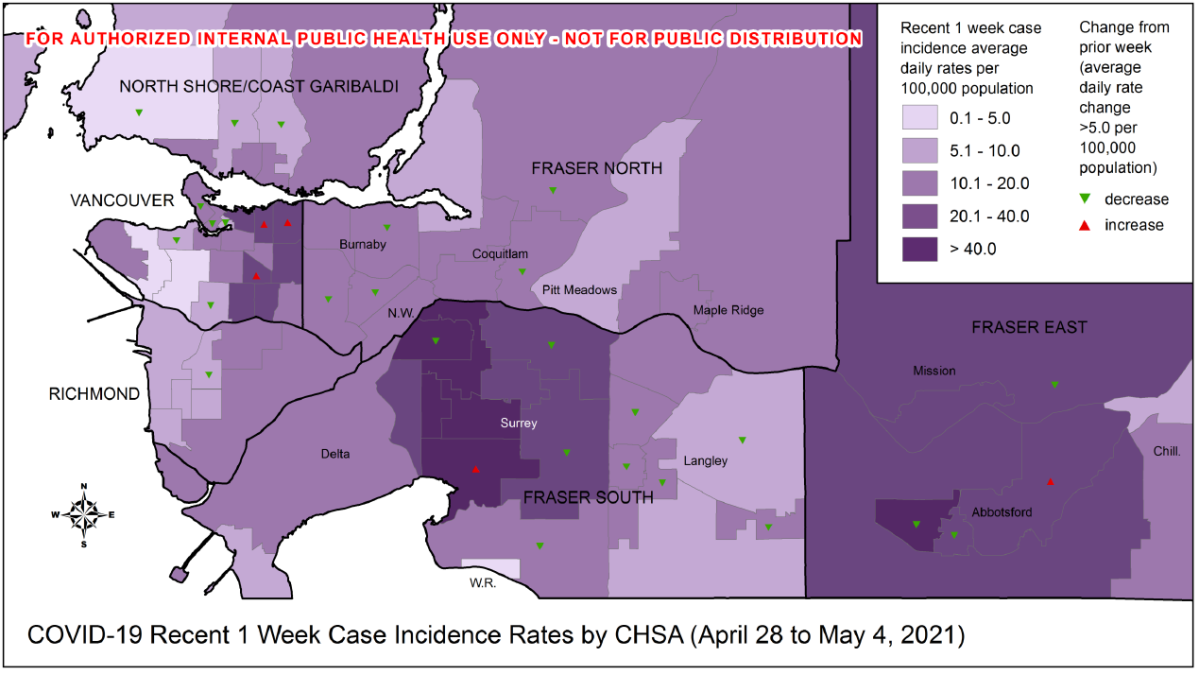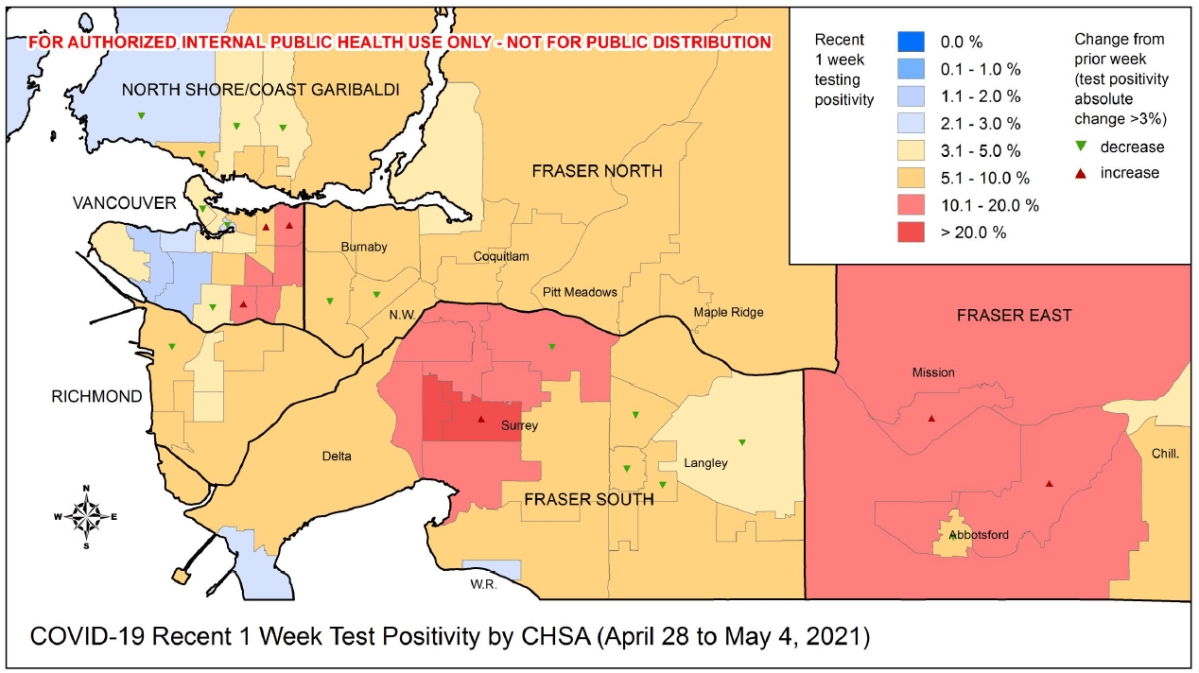Newly released neighbourhood-level data from the B.C. Centre for Disease Control is providing a clearer look at race between vaccination and COVID-19 in the province’s virus hot spots.

On Wednesday, the province finally made the high-detail pandemic data public, which offers a snapshot of the province as of the first week of May.
The data shows central and north Surrey, East Vancouver and a portion of Abbotsford facing the highest levels of test positivity and cases per capita.
Test positivity was more than 20 per cent in two central Surrey neighbhourhoods, while East Vancouver, north Surrey and most of the Fraser East region all had positivity rates of between 10 and 20 per cent.
One central Abbotsford neighbourhood and the entire western side of Surrey both reported more than 40 cases per 100,000 residents, while East Vancouver reported between 20 and 40 cases.
Many of those same neighbourhoods also had the lowest levels of immunization: between one and 20 per cent, according to the data.
- Canadian man dies during Texas Ironman event. His widow wants answers as to why
- ‘Sciatica was gone’: hospital performs robot-assisted spinal surgery in Canadian first
- Canadians more likely to eat food past best-before date. What are the risks?
- Treatment from female doctors leads to lower death rates, study finds
While health officials have set up pop-up vaccine clinics in some of these communities, available doses haven’t translated easily into vaccinated residents.
“There is an element of accessibility issues that underlie this,” B.C. physician Dr. Birinder Narang said.
“We know that some of the populations that have been hardest hit also have other barriers that we’ve seen in the past accessing healthcare in general. Whether its a language barrier, whether it’s essential work that doesn’t allow them the the flexibility to seek healthcare.”
Many of the neighbourhoods facing high levels of transmission are among the region’s most racially diverse, tend to be lower income and are among those facing disproportionate impacts from the overdose crisis as well, Narang added.
“It might not be at the top of their priority list when it comes to their health right now. Part of that is how do we approach these patients in a more holistic manner, addressing their needs along with the needs of public health,” he said.

Health officials say they’re using the data to better target communities at risk and to try and boost vaccination rates.
Fraser Health CEO Dr. Victoria Lee said the health authority was working with community groups to better understand the barriers they face.
As an example, Lee said the health authority was working to better communicate that multi-lingual translation options are available to people who phone the vaccine registration line by pressing “3.”

“We are identifying every barrier and removing them as quickly as possible,” Lee said.
“But once your age comes up, please, please, please register as soon as your age is up in any of the communities, because that’s the only way we will put this pandemic behind us.”
Health officials are working to get the message out in different languages, as well as running clinics and registration drives in culturally-safe environments, such as gurdwaras and mosques she said.
They’ve also tried extending hours for vaccine clinics to account for people whose work hours may interfere with getting their shot.
“We are seeing actually improvements in those communities 18-plus, so we’re seeing positive progress from the efforts we’re putting in, which is the whole point for having that data,” Lee said.
“Some of the work we have done, in terms of having more of the neighbourhood inreach clinics and having some of the drop-in capacity, some of those actually made 200-300 per cent increase in immunization on those days.”
As of Wednesday, more than 42 per cent of British Columbians had received at least one dose of COVID-19 vaccine.
The province also announced it was opening bookings for vaccination to anyone aged 30 and over.








Comments